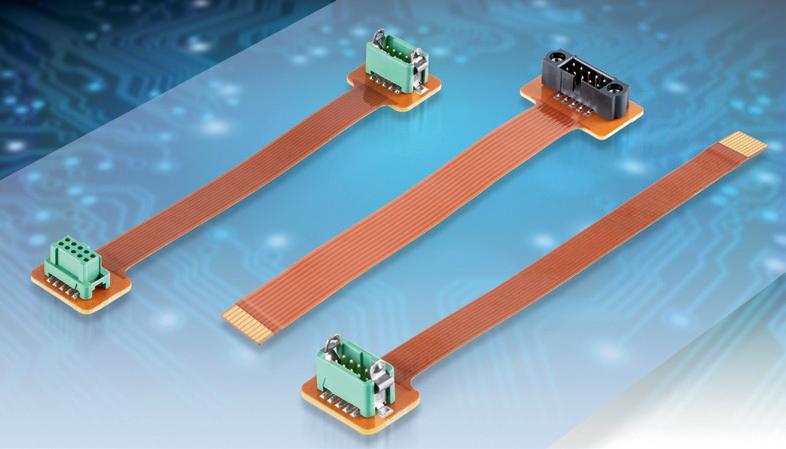
7 minute read
New guidelines for software updates on embedded systems
NEW GUIDELINES FOR SOFTWARE EMBEDDED
©stock.adobe.com/au/NicoElNino
UPDATES ON SYSTEMS
Cybersecurity for embedded systems and the Internet of Things (IoT) is set to take a step forward, with the not-for-profit Trusted Computing Group (TCG) announcing its latest guidelines and best practices for software and firmware updates for embedded systems.
Firmware and software updates are of increasing importance. Attackers constantly target the firmware and software in embedded systems, such as appliances and connected door locks, searching for vulnerabilities to exploit in order to establish a permanent foothold on the device. As a result, designers of embedded systems (ordinary items with an embedded computer) must be prepared to deliver firmware and software updates that customers must promptly install to ensure that these connected devices remain secure.
With its newly released document, TCG is sharing a set of guidelines and best practices for secure software and firmware updates. By following these guidelines, manufacturers can keep their products secure throughout the lifetime of the products, not just when they are purchased. As a result, manufacturers should be able to avoid the bad publicity, recalls and other problems caused by infected machines.
“The state of the art in information security is advancing rapidly and this is even more true for embedded systems security,” said Steve Hanna, Chair of TCG’s Embedded Systems Work Group. “We must constantly raise the bar in the way that we build and maintain these systems so that the defenders can stay ahead of the attackers.”
Driven by functionality, convenience and profit for both the manufacturer and the user, network-enabled embedded systems (IoT) are found in an ever-widening number of smart applications and platforms, including automobiles, household appliances, industrial systems and medical equipment. Increasing network connectivity in such devices allows for advanced feature sets, increased awareness and response, and faster patching and updating of system firmware and software. However, this network connectivity also results in new threats and potential issues that never previously existed in platforms.
The Stuxnet virus in 2010 that compromised programmable logic controllers (PLCs) used in the Iranian nuclear program is a prime example of the scale of attack that can occur if embedded systems are not secure. A similar attack was also successful against the Ukrainian power grid in 2015, resulting in temporary power loss for 225,000 individuals. Both incidents illustrate the potential impact of cyber attacks against embedded systems in critical infrastructure and both took advantage of weak software update mechanisms.
“As we put greater trust in things like autonomous cars, smart homes and healthcare sensors, we need to take steps to make sure connected devices are tightly secured to protect them from data breaches and hackers,” Hanna said. “Over the years TCG has developed a range of technologies to address the challenges faced by the industry, resulting in widely deployed, proven solutions. These open standards are the ideal option for delivering the security needs for embedded systems as we move towards a world where everything is connected.” To view the new guidelines, visit the TCG website.

CONNECTORS WITH FLEXIBLE PRINTED CIRCUITS Harwin now offers both its Datamate J-Tek and Gecko high-reliability (Hi-Rel) connectors with flexible printed circuits (FPCs) attached for situations where there is little space above the board surface. Suited to aerospace, motorsport, satellite and defence installations, the FPC assemblies provide engineers with low-profile interconnect solutions, meaning the PCBs within a system design can be stacked closer together. Through right-angled connections, these components can be kept at the periphery of the board, resulting in thermal management and ease of mating benefits.
The Datamate J-Tek option consists of a 2 mm-pitch connector plus a 1 A-rated 1 mm-pitch FPC, and is supplied in a single-ended design fitted with a male connector. The Gecko options have a 1.25 mm-pitch connector along with a 0.4 A-rated 0.5 mm-pitch FPC, available in single- or double-ended configurations.
The FPCs feature a copper-clad polyimide base with a bonded overlay. There is a rigid area at each end to aid connector mounting. They are able to support a tighter bend radius than conventional cables, according to the company, and are better suited to dynamic movement when bent.
Due to the 4-finger design used for the beryllium copper contacts, the assemblies exhibit strong resilience to shock (up to 100G) and vibrational forces (up to 20G), without breaks in signal. The inclusion of stainless steel jackscrews on the Datamate connectors and sturdy latches on the Gecko connectors ensures interconnect integrity is maintained.
The FPC assemblies have an operational temperature range matching the relevant connectors, as wide as -65 to +150°C. The free ends of the FPC are compatible with industry-standard FPC/FFC connectors that accept 0.3 mmthick circuits. Clarke & Severn Electronics www.clarke.com.au EMBEDDED CONTROLLER Aplex’s ACS-2310 Ultra Compact Multi-Core Embedded Controller is a high-performance, standalone, embedded ultraslim PC featuring fanless operation, extensive I/O, compact size and robust construction. The product is based on the Intel system-on-chip (SoC) chipset to provide a state-of-the-art multi-core embedded platform.
The unit is equipped with a factory-installed quad core Celeron N2930 1.83 GHz processor, one SODIMM socket supporting up to 8 GB of DDR3L system memory, two Gigabit RJ-45 Ethernet connectors, two USB 3.0 ports, four USB 2.0 ports, one RS232/422/485 port and two RS-232 ports. It provides one 2.5″ mounting for a hard drive or SSD and one full-size Mini-PCIe slot that can be shared with mSATA. System expansion is possible via a second full-size Mini-PCIe slot. One HDMI port and one VGA port are provided for high-resolution displays.
The product’s fanless design, coupled with an operating temperature range of 0 to 50°C, should ensure long-term operation in industrial and embedded environments. Measuring 207 x 130 x 35.5 mm, the compact device can be powered from a 12 VDC source. An optional 100–240 VAC power pack is also available. Interworld Electronics and Computer Industries www.ieci.com.au

A POWERFUL SOLUTION FOR ALL HMI-PANEL-PC‘S
profiPANEL command enclosures & the profiPLUS suspension system: Made for profession. Made for your HMI. Made in Germany.

ROLEC OKW Australia New Zealand Pty Ltd Unit 6/29 Coombes Drive Penrith NSW 2750
Phone: +61 2 4722 3388 E-Mail: sales@rolec-okw.com.au
www.rolec-enclosures.com.au
REWIREABLE IEC APPLIANCE INLET
The IEC appliance inlet 4783 from SCHURTER combines a reconnectable C13 ap

pliance inlet with a V-Lock cord retention system. Reconnectable appliance sockets are particularly suitable for small series builds, with the user free to choose the cable length and country-specific plugs. The product is available in black, white and grey for better differentiation, eg, in three-phase systems.
SCHURTER already offers a wide range of rewireable IEC device connectors. The 4783 features the integrated V-Lock cord retention system, which effectively prevents the cable from being pulled out unintentionally.
A cable guard with a diameter of 8.5 or 10 mm is pre-assembled at the factory. The screw terminals accept cables with cross-sections between a minimum of 3 x 0.75 mm 2 /18 AWG (0.82 mm 2 ) and a maximum of 3 x 1.5 mm 2 /14 AWG (2.08 mm 2 ).
The product does not use halogens in the cable guard or any other plastic components. It has all approvals for the European, Chinese and North American markets and is also certified according to the UL 60320 standard. SCHURTER (S) PTE LTD www.schurter.sg

SINGLE-WIRE CONNECTORS Würth Elektronik has released the WR-FAST series of THT-configurable male connectors for accommodating single wires with blade receptacles, eg, in household appliances. The connectors are available in various blade designs, orientations and dimensions and are intended for current flows up to 16 A and working voltages up to 300 V.
Straight or angled contacts in various numbers are available for the common 6.3 mm blade receptacles as well as the 2.8 mm version. For the latter, the 2863-type WR-FAST connectors are used: the forked blades can accommodate both types of blade receptacles.
The connectors are designed for operating temperatures from -30 to +120°C. They have passed glow wire testing according to IEC 60335-1 and meet flammability class UL94 V-0. They also have cULus approval. Wurth Electronics Australia Pty www.we-online.com





Powering New Technologies in Electronics and Hi-Tech Manufacturing Make new connections at Australia’s largest Electronics Expo. See, test and compare the latest technology, products and solutions to future proof your business.









